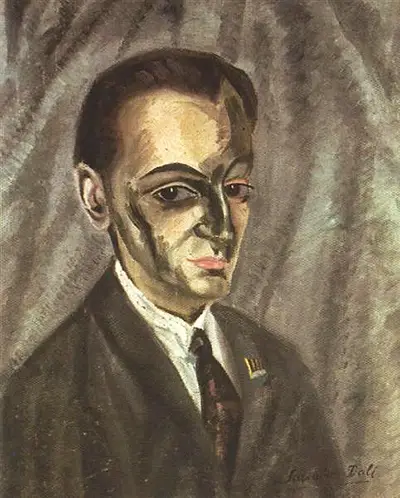In his early years as an artist, Dali was still a long way from his signature style of surrealism. He experimented with a number of different artistic movements, including impressionism for a number of years. He was perhaps developing his technical skills at this stage rather than worrying about just what type of artist he wanted to be. This portrait of Jose M. Torres can be described as being of the Expressionist style, where he was starting to take reality and amend it. It is the darker tones which provide his flair here, with shadowing only loosely added around the model's nose and forehead.
Precision is not the key to Expressionism, instead this is an environment in which an artist can relax and work more spontaneously, approaching a topic more generally and allowing it to appear on the canvas organically. You may see similarities with a German artist by the name of Kirchner, who gave us memorable artworks such as Potsdam Square, Berlin, Franzi in Front of Carved Chair and Berlin Street Scene. There are also some similarities amongst a number of Egon Schiele paintings as well. Sadly, the artwork that we find in front of us here is not as well documented as many of Dali's other paintings and so we are left trying to fill in the blanks to a certain degree.
There are also a few inconsistencies around the artwork in how it has been documented. Some have actually named the individual here as Joan Maria Torres, and have given the painting a date of circa 1922 instead. The fact that the name is unclear, suggests that this individual was not particularly famous, otherwise a more concise decision would have been made later on. We do know that Dali was producing a large number of portraits right across this period and so either dates could actually be correct. We should remember that the artist was just in his late teens at this point and so was experimenting with all manner of styles at that point. He also would not have been able to afford to hire expensive models at that time, and so perhaps simply requested a local individual to pose for him. The result is a well crafted expressionist portrait that belies the artist's relative inexperience at that stage of his career.

